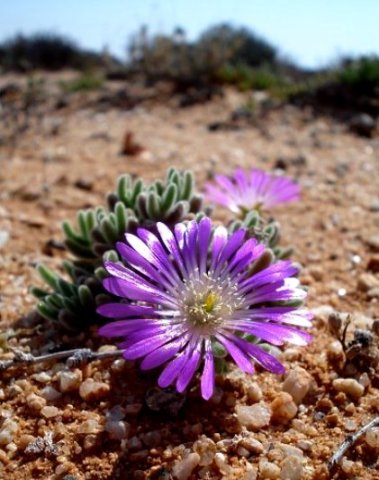Drosanthemum

Author: Ivan Lätti
Photographer: Judd Kirkel Welwitch
Drosanthemum is a genus of about 120 shrublets of the Aizoaceae or mesemb family occurring in southern Africa, mainly in the southwestern region. The branched plants are erect or prostrate, the stems maroon to ochre, hairy or not with distinct internodes, in some species rooting at the nodes.
The succulent leaves are decussate, i.e. successive, identical leaf pairs perpendicular to the preceding ones, rarely fused at the base and often short-lived. The leaves are triangular in cross-section with distinct keels or cylindrical with rounded tips. The leaf surfaces are usually covered in glistening water cells or papillae. Leaves may be up to 5 cm long and 4 mm in diameter.
Flowers usually grow in clusters varying in colour among white, yellow, orange, scarlet or purple, not blue. The calyx is usually five-lobed, sometimes six-lobed. The petals grow in one or two series.
There may be staminodes around the stamens or not, sometimes black in yellow or red flowers. When staminodes are present the stamens cohere in a cone, when not, they spread. The flowers have four to six stigmas.
Fruit capsules are usually long-stalked and light-coloured, comprising four to six locules with covering membranes and broad valve wings. The latter two features are absent in the Delosperma genus (Leistner, (Ed.), 2000; Smith, et al, 1998; Herre, 1971).

